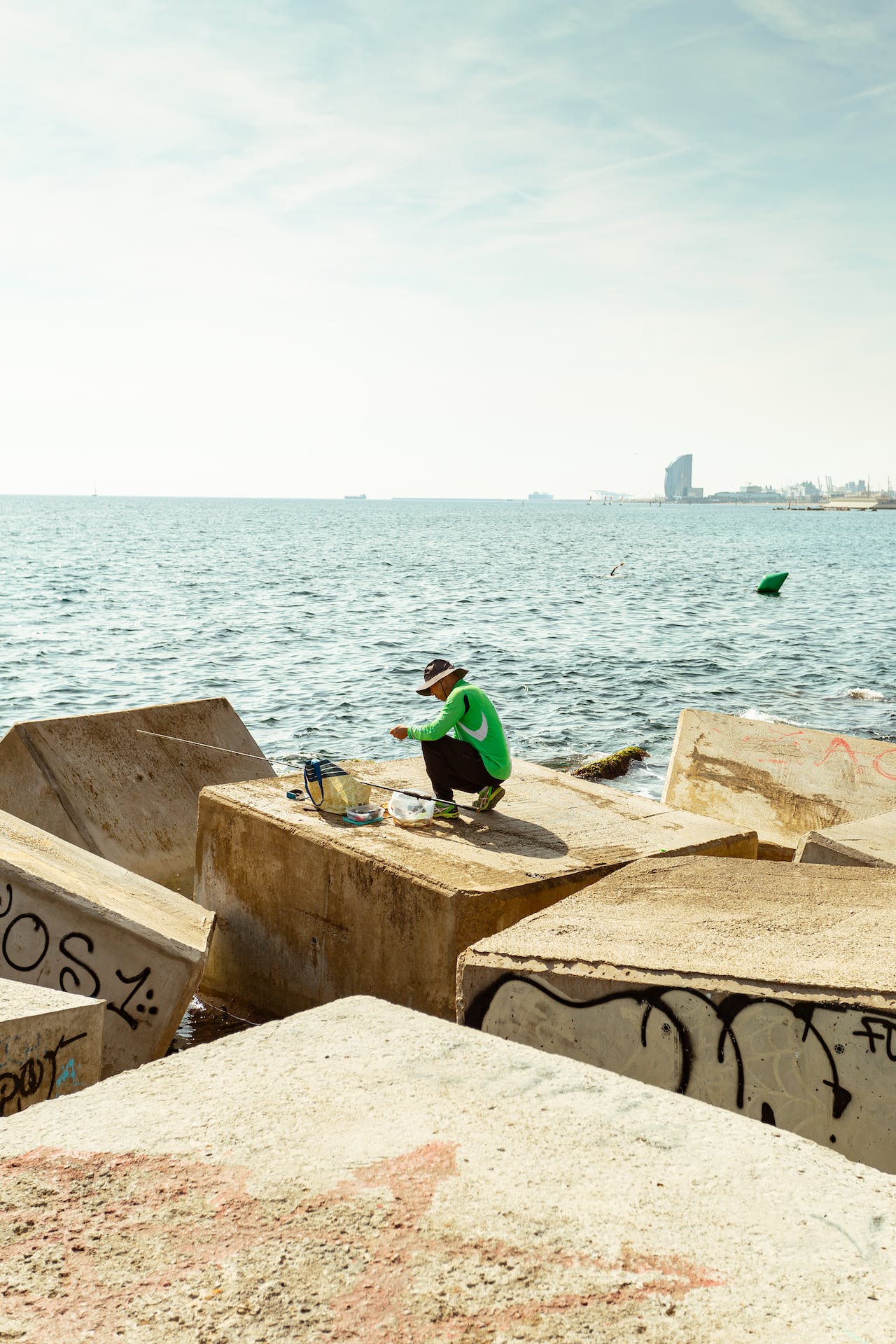
In the world of fishing, there are different techniques and approaches to catching various types of fish. Among these many methods, one that stands out and is gaining in popularity is the Japanese practice known as 'tenya'. Although it has been traditionally used for years in Japanese waters from a boat, many fishing enthusiasts wonder whether it is also possible to fish with a tenya from the shore. That's exactly what we're going to find out in this article!
What is the tenya fishing technique?

Before examining whether this method can be used from the shore, it is essential to understand what exactly tenya fishing is. This type of fishing uses a special hook, also known as a "tenya", which is attached to a weight.
Traditionally, the angler places a bait (usually a piece of prawn) on this hook before lowering it to the bottom of the water, where the target fish are.
The size of the tenya used varies according to the weight needed to reach the desired depth and keep the line close to the bottom. This technique has proved its worth when it comes to catching fish such as pike-perch, grouper and sea bream.
Today, you can count on a multitude of products designed specifically for this type of fishing. You'll find : rod, reels and even artificial lures called Kabura & Madaï, both optimised for fishing the biggest specimens.
Discover all the equipment for tenya fishing
Tenya characteristics:
What distinguishes the tenya from other hooks is its shape. Generally, it is designed to imitate a crustacean or small prey. The colour, size and even the type of material used to make the tenya vary according to the species of fish you are after and the environment in which you are fishing.
This characteristic attracts fish because it looks like easy prey, which encourages them to bite without hesitation.
Tenya fishing from the shore

Now that we've explained the tenya technique, the main question remains:"Can you fish with a tenya from the shore? Although this method was originally developed for use from a boat, it can also be adapted for fishing from the shore.
To do this, you need to take a few precautions. Firstly, adapt the technique to ensure that the hook effectively reaches the seabed from the shore. Secondly, choose the right equipment to maximise your chances of catching fish successfully.
Adapting to coastal conditions
To be able to use this method from the shore, it is crucial to find a place where the water depth lends itself to tenya fishing. Rocky areas or docks are often good choices, as the presence of underwater structures favours fish habitat.
It's also important to assess the strength of the current. A current that is too strong can drag the hook away from the desired area, reducing the effectiveness of the technique.
Choosing the right equipment for shore fishing with tenya
When it comes to choosing the right equipment for this method when fishing from the shore, several factors come into play:
- The rod fishing line: Opt for a rod of sufficient length and power to ensure that the hook reaches the seabed. A telescopic rod or a surf-casting rod could be a good option in these circumstances. We also offer a wide selection of rods specially designed for tenya fishing, so you're sure to find what you're looking for!
- The weight of the tenya: Use different weights of tenya to cope with different depths and fishing conditions. A heavier weight will be needed if the current is strong or if you need to reach the bottom quickly.
- Line: To maximise sensitivity when sensing bites, use a thin, strong line such as fluorocarbon or braid. This will also prevent the line from being carried away by the current.
Be patient
As with any other fishing technique, patience is essential when fishing with tenya from shore. This means being prepared to adapt your strategy according to the conditions you encounter and to persevere even if the first few attempts are unsuccessful.
To maximise your chances of success, you also need to be aware of the changing seasons, tides and times of day, which influence the behaviour of the fish you are targeting. For example, some fish may be more active at certain times of the year, or at night.
